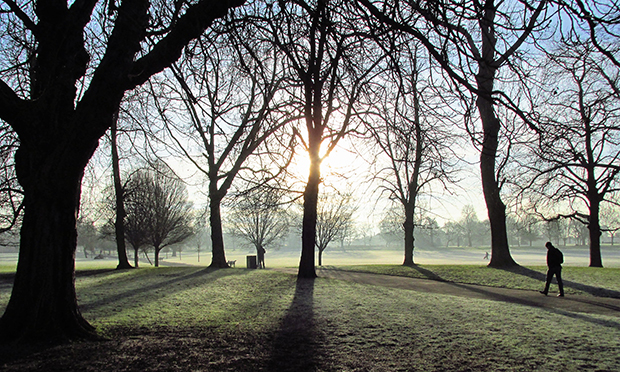Union of Hackney Gardens calls for more local powers to protect open space

The Union of Hackney Gardens (UHG) has voiced its “alarm” at the lack of a policy in the upcoming local plan for the borough allowing local people to have say in protecting open spaces from development.
The council defended leaving out of Local Plan 2033 (LP33) powers for community designation of patches of open land that are important to them , arguing that those powers still exist at a national rather than a local level.
However, the Union of Hackney Gardens, which formed in September, is now calling on the council to make “eleventh-hour” changes to LP33, writing to the Town Hall to ask it to set out how communities can nominate open spaces such as the Dalston Eastern Curve Garden for protection, claiming that unless this is done they will remain “vulnerable to development” for the next 13 years.
Union of Hackney Gardens spokesperson Kate Poland says: “Hackney has a rich abundance of beautiful parks, community gardens and public green spaces.
“It’s welcome that the Council has put many local open spaces on a map and imposed conditions around building on them. But LP33 falls short of what needs to be done.
“The Council should now ask residents to identify local open spaces which are important to them and our local wildlife. Then these spaces can be put on the map too and given some protection from development.”
National planning policy gives local communities the power to recommend a special local open space is designated for full Green Belt protection.
LP33, which was submitted to the Planning Inspectorate for examination in public on 23 January, makes clear the council’s aims: “To protect and enhance existing open spaces and biodiversity, develop and improve green links between these spaces and support the creation of new open spaces and vertical gardens.”
The plan (described as a “mighty tome” by planning boss Cllr Guy Nicholson on its unveiling in October last year) ties all new developments to replace any public open space which they take up with “better or equivalent” space, underlining that the quality of remaining open space is not “eroded” by what is being built.
Any major developments of over 100sqm also require living roofs, with all existing allotments protected, and any proposals for 10 or more homes to provide 14 sqm per person of communal open space.
LP33 adds: “Population growth and development pressures in Hackney increases the importance of protecting all existing open spaces within the green infrastructure network, and this is especially important in areas of deficiency…
“Loss of other open space, which tends to be located within housing estates, will also be carefully managed…as these spaces play a particularly important role for those without access to private gardens.”
The Union of Hackney Gardens is saying that areas categorised as ‘local open spaces’, which can include some of the borough’s community gardens, parks and playing fields, cannot be built on unless a new open space is created adjacent to it, though building on them has not been outright banned.
The existing Development Management Local Plan 2015 does refer to the designation of local green space in a repetition of national policy, which it is understood will remain in place alongside the new Local Plan, with the Town Hall insisting that powers for community designation have not been removed, but exist at a national rather than local level.
Community designation powers are not mentioned in LP33’s section on open spaces, though it is understood that councils are discouraged by central government from duplicating national planning policy in their own local plans.
